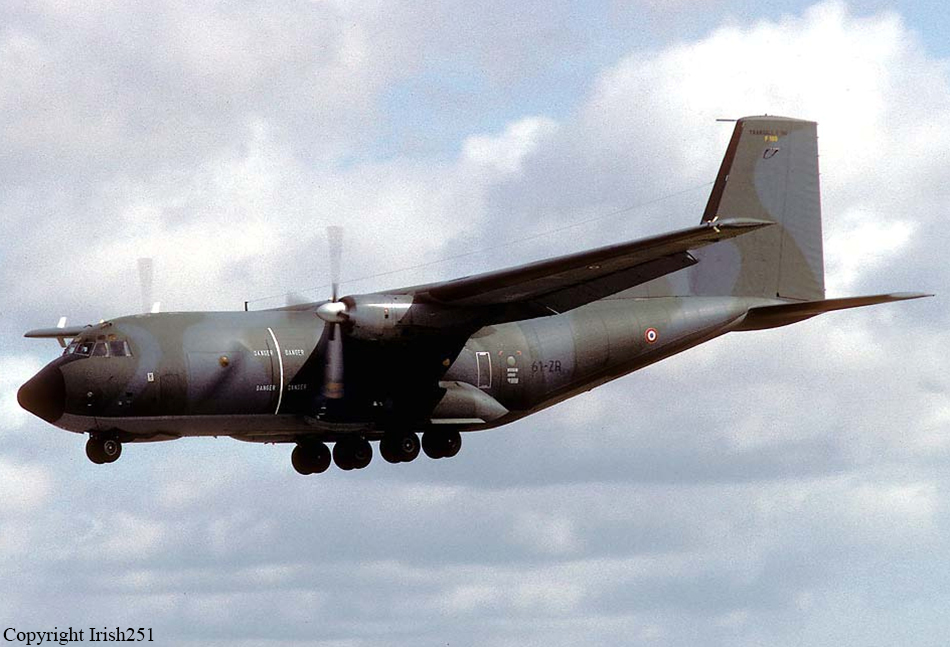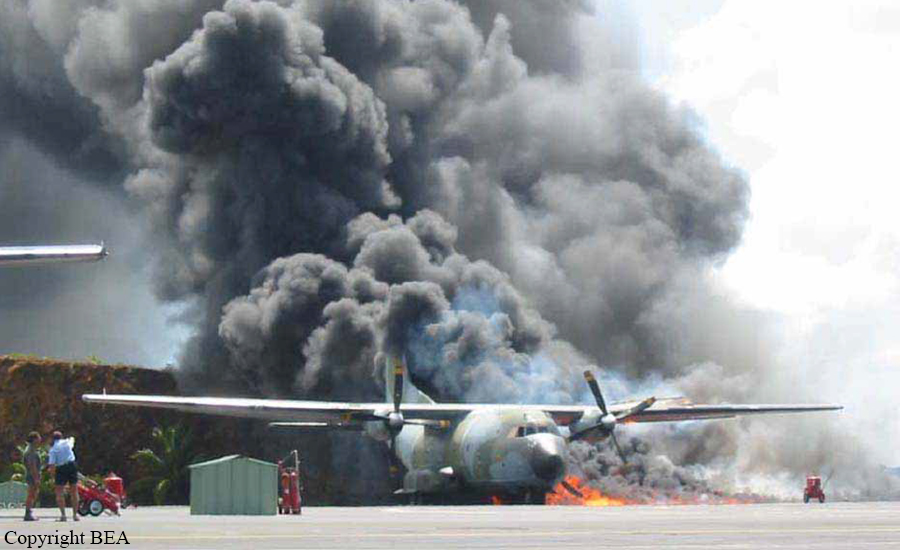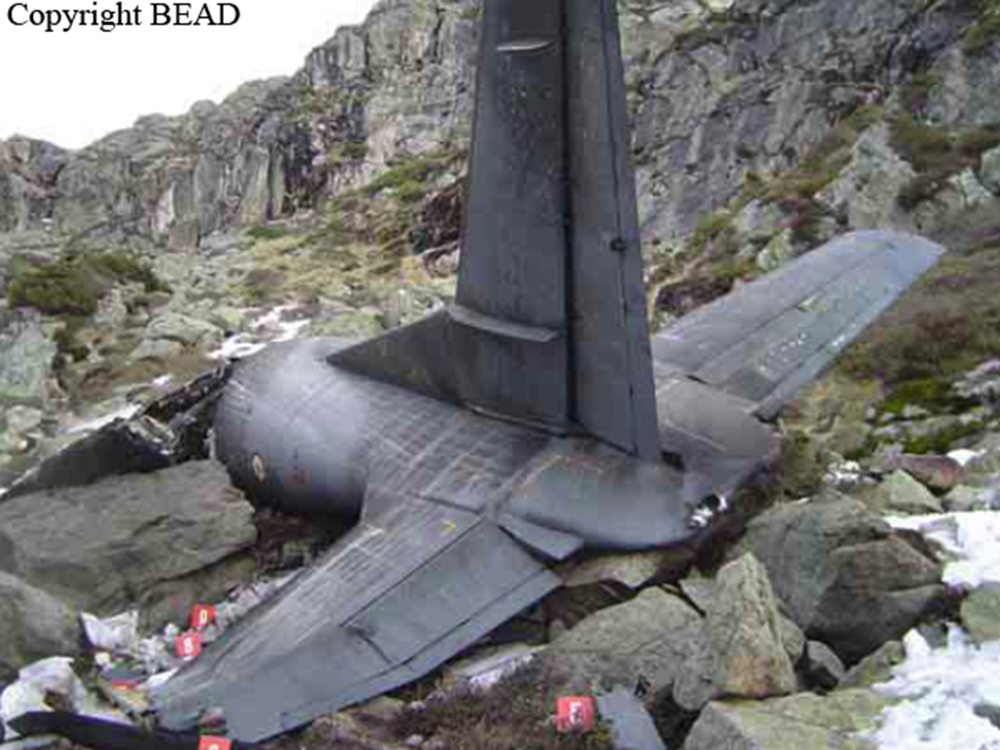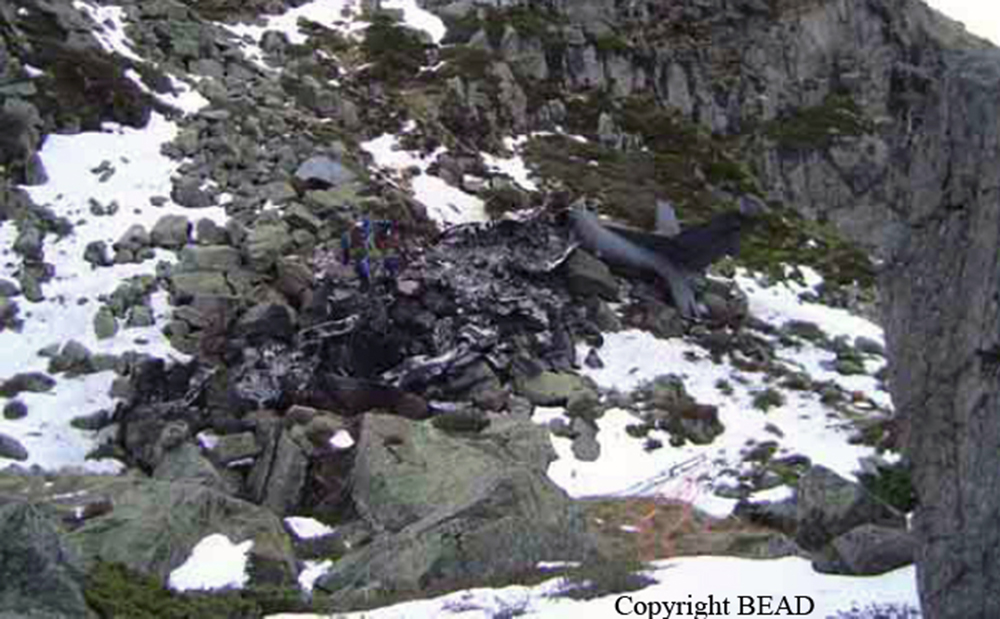Country
Operator Image

Ground fire of a Transall C-160 in Fort-de-France
Date & Time:
May 6, 2004 at 1358 LT
Registration:
R100/F-RAZR
Survivors:
Yes
Schedule:
Fort-de-France - Fort-de-France
MSN:
F100
YOM:
1970
Crew on board:
8
Crew fatalities:
Pax on board:
0
Pax fatalities:
Other fatalities:
Total fatalities:
0
Aircraft flight hours:
18530
Circumstances:
The aircraft was engaged in a local post maintenance test flight at Fort-de-France-Le Lamentin Airport, carrying five technicians and three crew members on behalf of the Escadron de Transport Outremer 58. After engine startup, the crew started to taxi when a fire erupted. The aircraft was stopped on the ramp and all eight occupants escaped uninjured. Within three minutes, fire bombers were on site and extinguished the fire. Nevertheless, the aircraft was damaged beyond repair.
Probable cause:
The accident was caused by electrical arcing at the power cable to a submersible fuel pump. This arcing occurred above the kerosene liquid inside the tank full of fuel vapors. The cable type used was chosen at the time of the design of the aircraft. Atmospheric conditions on the apron of Fort de France have raised the temperature of the reservoir beyond the flash point kerosene. The vapors contained in this tank were explosive, and the arc was enough to initiate the blast. As such, atmospheric conditions are a certain cause of environmental origin of the accident. The appearance of the arc is, in turn, has only technical causes:
- The quality of cable used and age are in fact responsible for the creation of the electric arc.
- The formation of the insulating sheath of this type of cable is not likely to ensure an absolute seal. This quality is also not claimed by its manufacturer.
Indeed, the analysis carried out show a porosity of electrical cable, even nine, therefore that it is soaked in kerosene. The presence of kerosene increases the phenomenon of porosity of old cables. Degradation characteristics of dielectric strength of the cable insulation explains the appearance of the arc. The accident occurred while the cable was over 19 years old. The fuel pumps wiring has never been a problem. But there has not been a cable that had reached the age of 19 years. The aging of the cable could still degrade the seal. Finally, maintaining this type of cable on the first C160 series until this accident was part of a complex process in which traceability has not been formally established. Doubts indeed appeared in 1969 on the quality of these cables, doubts that can be considered today as precursors. Measures had been adopted precisely to overcome these deficiencies. In this regard, the replacement of the fuel pump wiring of the second series C 160 of these cables with a newer type and considered more efficient is particularly significant. Its extension to the first series aircraft might have seemed relevant, and would probably have prevented the accident. The reasons which led to the maintenance of such cables on the C 160 series first held in both the human factor (underestimation of risk, lack of global view on the issue) and organizational factors, which can be seen as a lack of traceability of technical and logistic actions, a lack of consistency of the measures adopted, and probable deficiencies in the information flow.
- The quality of cable used and age are in fact responsible for the creation of the electric arc.
- The formation of the insulating sheath of this type of cable is not likely to ensure an absolute seal. This quality is also not claimed by its manufacturer.
Indeed, the analysis carried out show a porosity of electrical cable, even nine, therefore that it is soaked in kerosene. The presence of kerosene increases the phenomenon of porosity of old cables. Degradation characteristics of dielectric strength of the cable insulation explains the appearance of the arc. The accident occurred while the cable was over 19 years old. The fuel pumps wiring has never been a problem. But there has not been a cable that had reached the age of 19 years. The aging of the cable could still degrade the seal. Finally, maintaining this type of cable on the first C160 series until this accident was part of a complex process in which traceability has not been formally established. Doubts indeed appeared in 1969 on the quality of these cables, doubts that can be considered today as precursors. Measures had been adopted precisely to overcome these deficiencies. In this regard, the replacement of the fuel pump wiring of the second series C 160 of these cables with a newer type and considered more efficient is particularly significant. Its extension to the first series aircraft might have seemed relevant, and would probably have prevented the accident. The reasons which led to the maintenance of such cables on the C 160 series first held in both the human factor (underestimation of risk, lack of global view on the issue) and organizational factors, which can be seen as a lack of traceability of technical and logistic actions, a lack of consistency of the measures adopted, and probable deficiencies in the information flow.
Final Report:


Crash of a Casa-Nurtanio CN-235M-200 on Pic du Pioulou: 7 killed
Date & Time:
Dec 17, 2003 at 1035 LT
Registration:
F-RAIA
Survivors:
No
Schedule:
Toulouse - Toulouse
MSN:
C-043
YOM:
1990
Flight number:
COTAM 1492
Crew on board:
4
Crew fatalities:
Pax on board:
3
Pax fatalities:
Other fatalities:
Total fatalities:
7
Captain / Total hours on type:
2683.00
Copilot / Total hours on type:
924
Aircraft flight hours:
4925
Circumstances:
Based at Creil AFB (BA110), the aircraft was dispatched at Toulouse-Francazal AFB on December 15 for a period of three days to conduct local missions with paratroopers. Undel callsign Cotam 1492, the aircraft departed Toulouse-Francazal Airport at 0952LT with 12 paratroopers and four crew members on board on behalf of the Escadron de Transport 01.062 Vercors. At 1017LT, while approaching the drop zone of Tour du Crieu at an altitude of 12,000 feet, nine skydivers left the cabin. Then the captain informed ground he want to conduct a low flight over the Pyrenees mountains for a period of 10-15 minutes before returning to the base. At 1025LT, the aircraft entered the Ariege valley between Foix and Tarascon then the Vicdessos valley. Approaching Suc-et-Sentenac at 1034LT, the aircraft turn to the right and started to climb to pass over the Pic du Pioulou. The climb was started at an altitude of 3,700 feet (600 feet above ground) with a rate of climb of 3,000 feet per minute and a speed of 170 knots. Due pass the Pic du Pioulou (7,200 feet high), the aircraft should climb at least 3,500 feet on a distance of 4,500 metres with an average slope of 23,4% which is over the aircraft capabilities. While climbing with a speed of 100 knots, the stick shaker activated and the stall warning sounded. The speed continued to drop and the aircraft nosed up, reaching an angle of attack of 55°. At a speed of 55 knots, the aircraft stalled, rolled to the left and crashed on the slope of the Pic du Pioulou at an altitude of 1,830 metres. The aircraft was destroyed by impact forces and all seven occupants (four crew members and three paratroopers) were killed.
Crew:
Cpt Charles Edouard Bardinet,
Asp Mallory Bernard,
Adj David Roux,
Adj/C Serge Kaczala,
Cap/C Mickael Larivière,
Cap/C Jérôme Garcia,
Cpt Aude Tessier.
Crew:
Cpt Charles Edouard Bardinet,
Asp Mallory Bernard,
Adj David Roux,
Adj/C Serge Kaczala,
Cap/C Mickael Larivière,
Cap/C Jérôme Garcia,
Cpt Aude Tessier.
Probable cause:
The accident, which occurred in a delicate aeronautical environment (mountain flying) sees its causes primarily related to the human factor. It occurred during the execution of an unscheduled and unprepared flight phase, by decision of the captain during the flight. Meanwhile, several factors point to an improvable rigor in actions performed by some crew members of this unit. A decision to change the mission in flight combines several errors that led to the accident:
- Overconfidence of the crew, unaccustomed to mountain flying, which engaged in a topography of which they underestimated the difficulty, the insidiously, because gradually, increasing slope,
- A lack of decision in the cockpit that originated in the establishment of a "soft consensus" itself resulting from functions, qualifications and personalities of various crew members,
- Incorrect assessment of the situation and the capabilities of the aircraft with regards to the topography,
- A lack of reaction in a degraded situation.
- Overconfidence of the crew, unaccustomed to mountain flying, which engaged in a topography of which they underestimated the difficulty, the insidiously, because gradually, increasing slope,
- A lack of decision in the cockpit that originated in the establishment of a "soft consensus" itself resulting from functions, qualifications and personalities of various crew members,
- Incorrect assessment of the situation and the capabilities of the aircraft with regards to the topography,
- A lack of reaction in a degraded situation.
Final Report:


